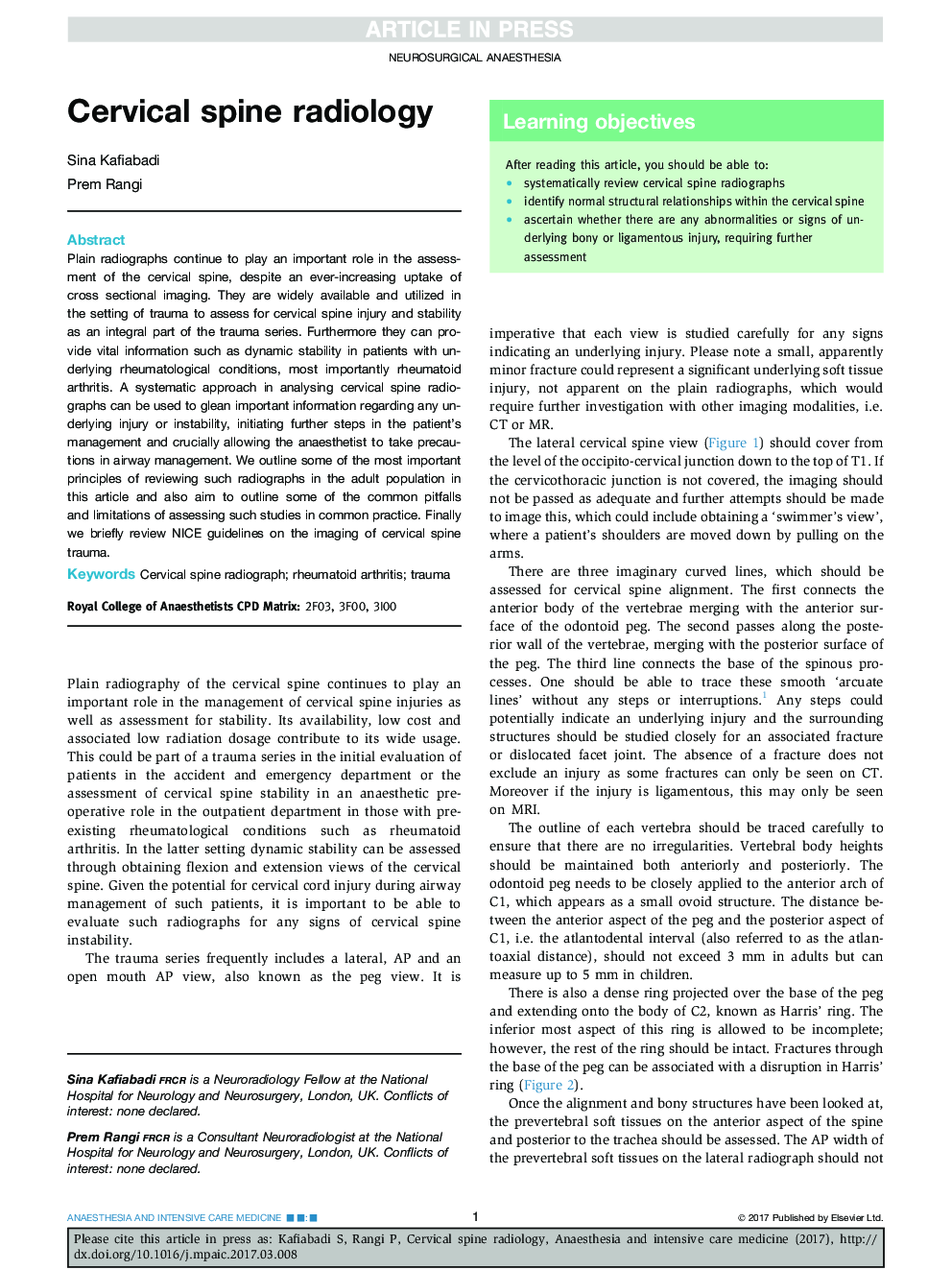| Article ID | Journal | Published Year | Pages | File Type |
|---|---|---|---|---|
| 5580224 | Anaesthesia & Intensive Care Medicine | 2017 | 4 Pages |
Abstract
Plain radiographs continue to play an important role in the assessment of the cervical spine, despite an ever-increasing uptake of cross sectional imaging. They are widely available and utilized in the setting of trauma to assess for cervical spine injury and stability as an integral part of the trauma series. Furthermore they can provide vital information such as dynamic stability in patients with underlying rheumatological conditions, most importantly rheumatoid arthritis. A systematic approach in analysing cervical spine radiographs can be used to glean important information regarding any underlying injury or instability, initiating further steps in the patient's management and crucially allowing the anaesthetist to take precautions in airway management. We outline some of the most important principles of reviewing such radiographs in the adult population in this article and also aim to outline some of the common pitfalls and limitations of assessing such studies in common practice. Finally we briefly review NICE guidelines on the imaging of cervical spine trauma.
Keywords
Related Topics
Health Sciences
Medicine and Dentistry
Anesthesiology and Pain Medicine
Authors
Sina Kafiabadi, Prem Rangi,
